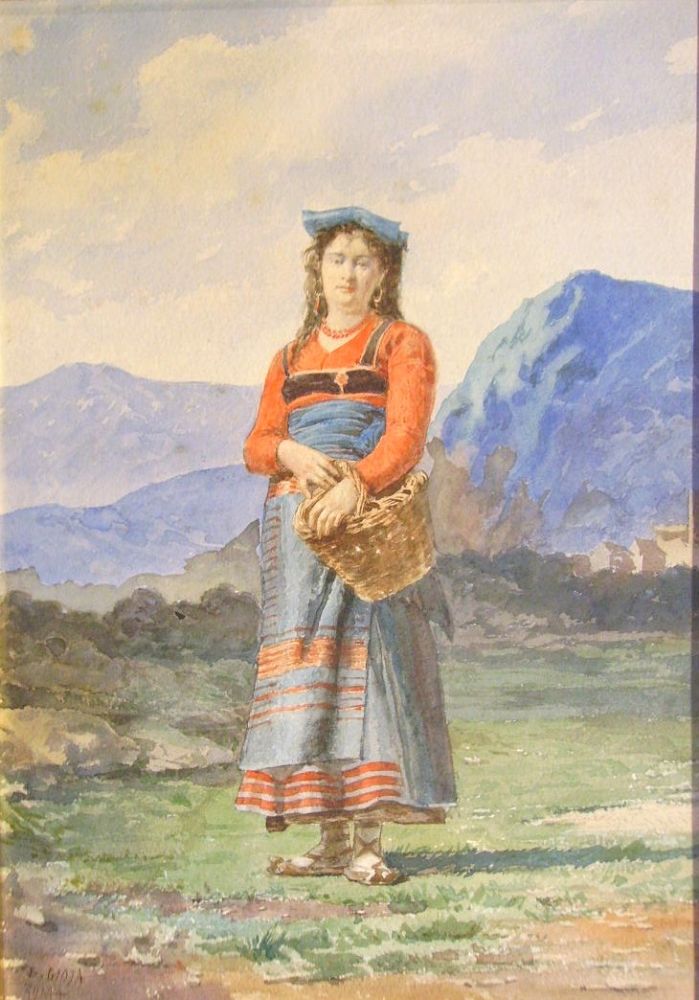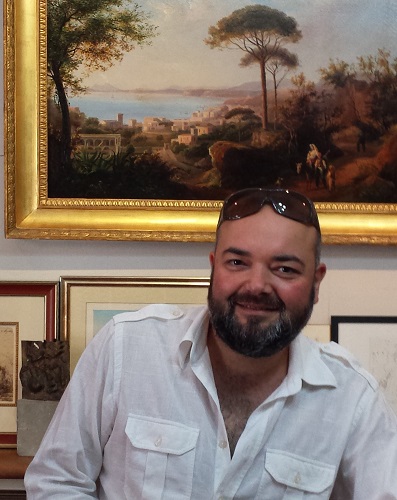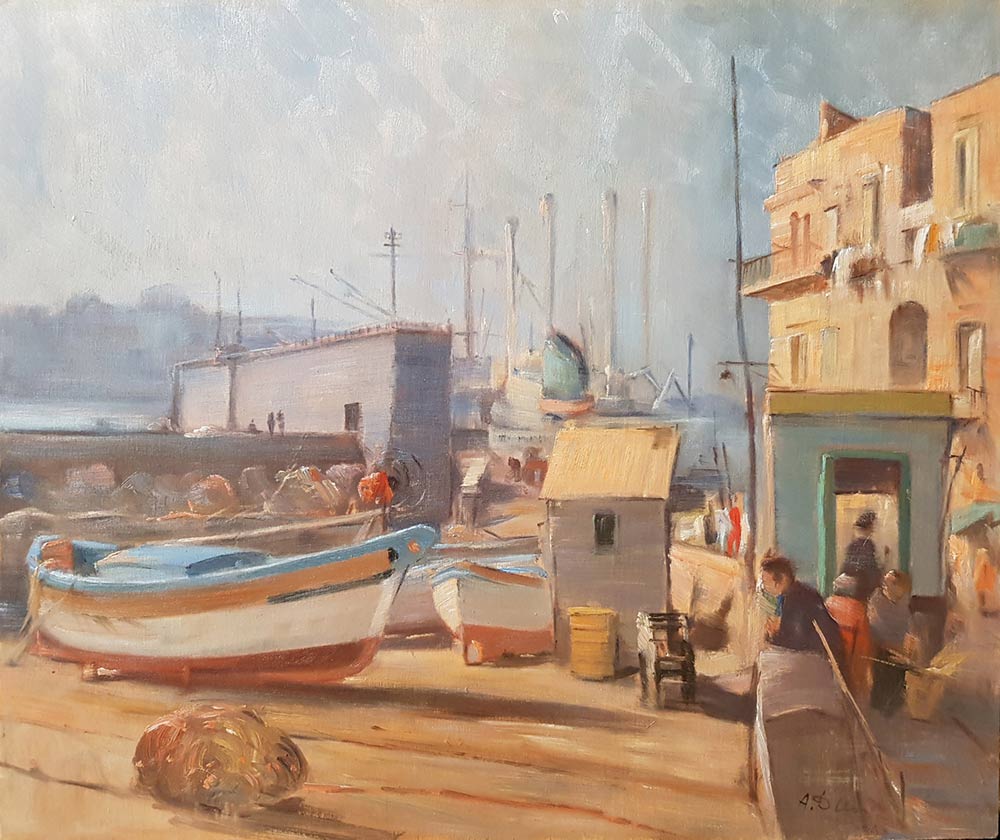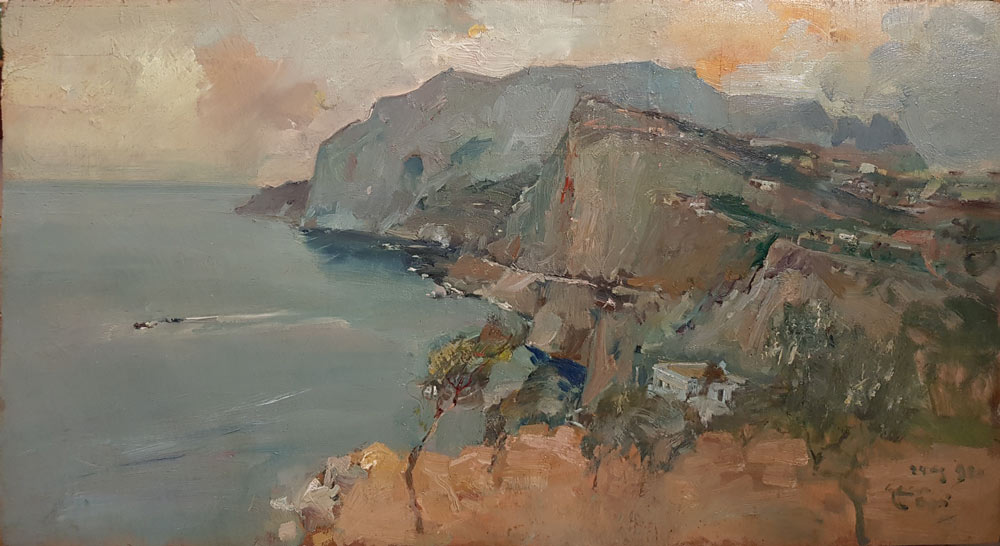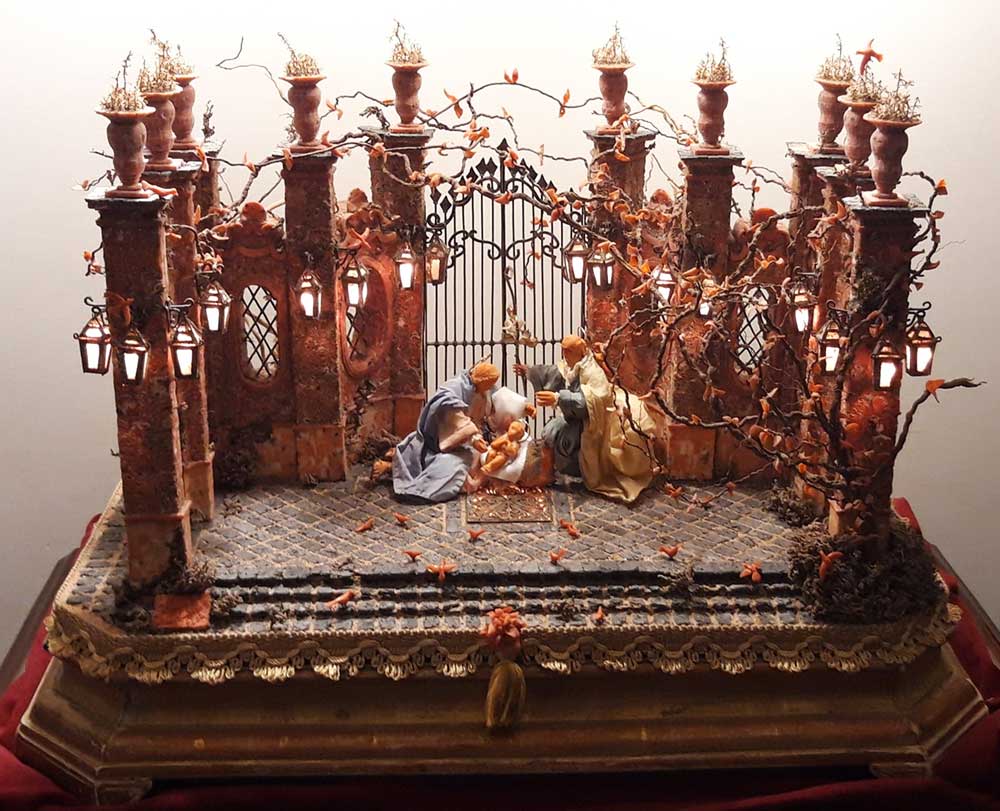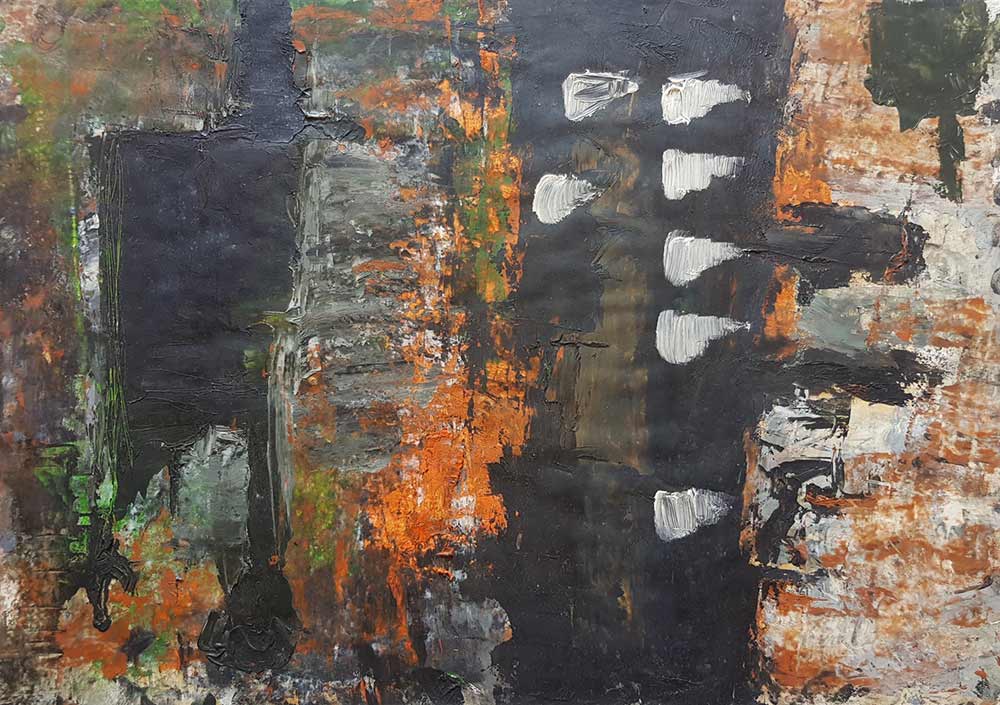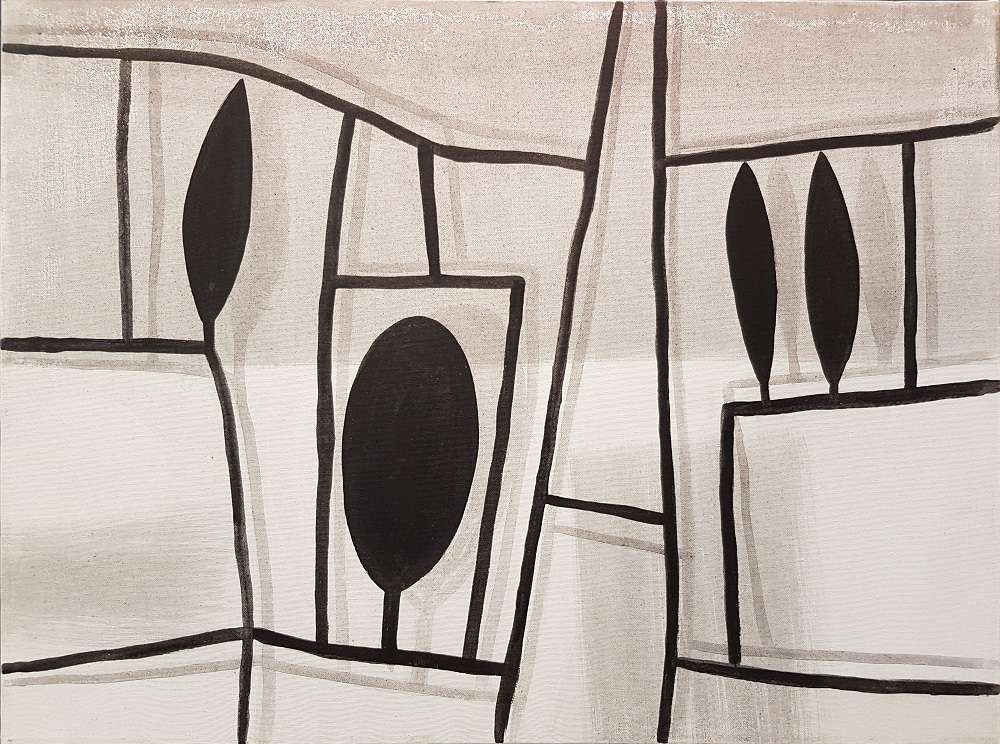Belisario Gioja, Contadinella
Autore:GIOJA BELISARIO
N. - M. :Roma, 1829 - 1906
Tecnica:Acquerello su cartone
Misure:34 x 24 cm
Anno:Sec. XIX
Classificazione: Figure, Paesaggi, Altre Tecniche, Figurativi, Antichi
Note Critico - Biografiche
Belisario Gioja
Roma, 1829 – 1906
Contadinella
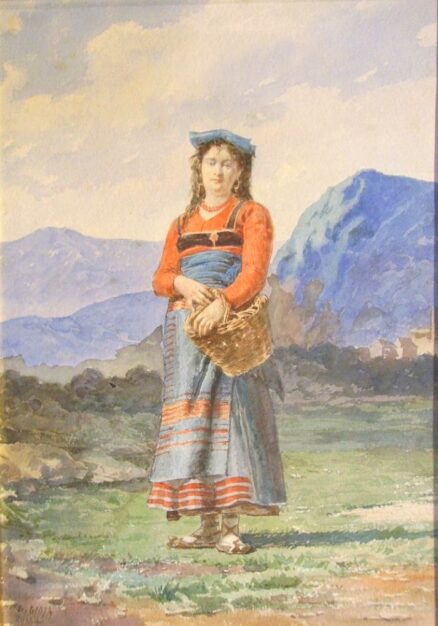
Cenni biografici su Belisario Gioja
Figlio di Gaetano Gioja da Rimini, Belisario Gioja nacque a Roma nel 1829. Poche sono le notizie su questo artista romano che era un pittore specializzato nelle tematiche di genere alternando soggetti agresti, scene di vita romana, figure e composizioni di gusto orientale, fu anche un abile bozzettista. Subì l’influenza dei pittori iberici, che nella seconda metà del XIX secolo soggiornavano numerosi a Roma, dimostrando grande abilità tecnica nel ricco impiego del colore con equilibrato taglio e prospettiva. Belisario era il padre di Edoardo Gioja (Roma, 1862 – Londra 1937) che educò alla pittura. Questi seguì le orme del padre e divenne un noto pittore di successo. I due realizzarono insieme alcuni soggetti come “Dall’antiquario”, del 1878, e “Un armatore olandese”, esposto nel 1891 a Milano. Nel 1884 Belisario Gioja espose “La civiltà cristiana” con la Società degli Amatori e Cultori. Successivamente partecipò a varie mostre tenutesi tra Roma, Firenze, Parigi e Londra. “Ebbe studio a Roma prima al n. 48 di via Margutta, poi a piazza San Silvestro 75, ancora a via Flaminia 89 ed infine in via del Babuino 61, da solo o assieme agli altri figli pittori Edoardo, Gaetano e Baldassarre” (Prof. Renato Mammucari). Gioja morì a Roma il 10 luglio 1906.
Biographical notes about Belisario Gioja
Son of Gaetano Gioja from Rimini, Belisario Gioja was born in Rome in 1829. There is little information about this Roman artist who was a painter specialized in genre themes alternating rural subjects, scenes of Roman life, figures and compositions of oriental taste, he was also a skilled sketch artist. He was influenced by the Iberian painters, who stayed in large numbers in Rome in the second half of the 19th century, demonstrating great technical ability in the rich use of color with balanced cut and perspective. Belisario was the father of Edoardo Gioja (Rome, 1862 – London 1937) who he educated in painting. He followed in his father’s footsteps and became a well-known and successful painter. The two created some subjects together such as “Dall’antiquario”, from 1878, and “A Dutch shipowner”, exhibited in 1891 in Milan. In 1884 Belisario Gioja exhibited “Christian civilization” with the Society of Amateurs and Cultivators. Subsequently he participated in various exhibitions held in Rome, Florence, Paris and London. “He first studied in Rome at no. 48 in via Margutta, then to piazza San Silvestro 75, again to via Flaminia 89 and finally to via del Babuino 61, alone or together with his other painter sons Edoardo, Gaetano and Baldassarre” (Prof. Renato Mammucari). Gioja died in Rome on 10 July 1906.
Marciano Arte, galleria d’arte e cornici, Napoli
